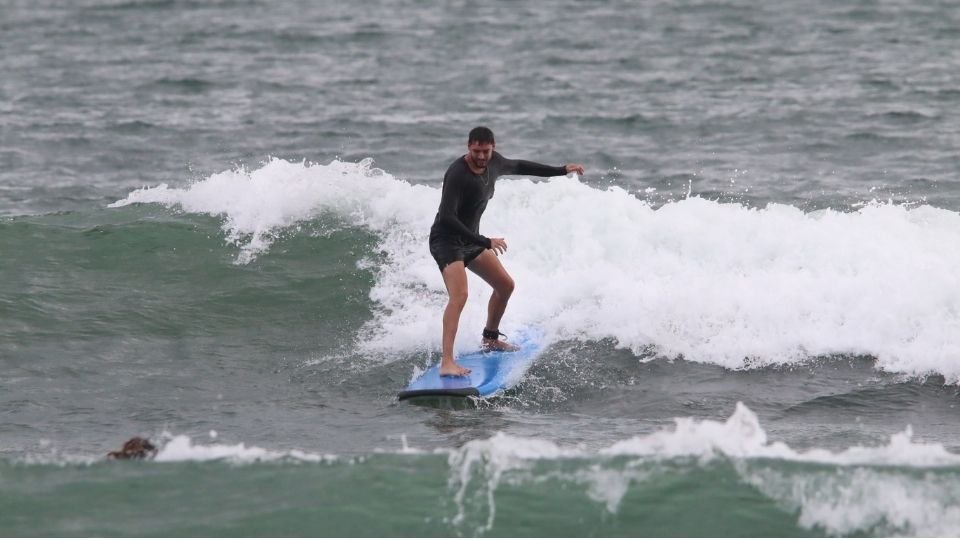
Best Views in Bali: A Guide to Bali’s Most Scenic Spots. Bali is often called the Island of the Gods, and for good reason. This tropical paradise offers some of the most breathtaking views in Southeast Asia. From stunning sunrise hikes to dramatic cliffside views, Bali’s landscapes will leave you in awe. Whether you’re seeking sunset panoramas, peaceful waterfalls, or lush rice terraces, Bali’s beauty is endless. Here’s a guide to the best views in Bali that every traveler should experience.
1. Mount Batur Sunrise: A Must-See Volcano View in Bali
For many visitors to Bali, Mount Batur is the ultimate spot to witness a magical sunrise. This active volcano in the Kintamani region offers incredible views of Lake Batur and surrounding mountains. Starting your hike early in the morning (around 3 a.m.) allows you to reach the summit in time for the sunrise, where you’ll be greeted by golden light and breathtaking panoramic views.
This trek is popular among adventurous travelers and photographers alike, making it a must-see for anyone looking to experience Bali’s natural beauty in its most dramatic form.
2. Campuhan Ridge Walk: A Scenic Stroll in Ubud
The Campuhan Ridge Walk offers one of Bali’s most scenic and accessible views, located just outside the cultural town of Ubud. This easy trail takes you through lush valleys, overlooking rice fields and traditional Balinese villages. The best time to visit is early morning or late afternoon when the sunlight filters through the trees and creates a peaceful atmosphere.
It’s perfect for anyone seeking a relaxed walk with stunning views without the need for strenuous hiking. Capture the beauty of the green hills, swaying palm trees, and the serene Balinese countryside.
3. Tegallalang Rice Terraces: Iconic Bali Rice Fields
No visit to Bali is complete without experiencing the Tegallalang Rice Terraces, one of the island’s most famous landscapes. These lush, green terraces are an example of the subak irrigation system and stretch across the central highlands. From the main viewpoint, you can see the layered rice paddies, the misty mountains in the distance, and the surrounding jungle.
Visiting at sunrise or sunset offers the best light for photos. A walk down into the rice terraces allows for a more immersive experience, where you can enjoy the stunning views up close.
4. Lempuyang Temple: Bali’s “Gates of Heaven”
One of Bali’s most Instagrammable spots is Lempuyang Temple, known for its iconic Gates of Heaven. The view from these gates frames Mount Agung, the tallest volcano in Bali, creating a breathtaking image that is widely shared online. This temple, located in East Bali, requires a bit of effort to reach—over 1,700 steps—but the view from the top is well worth it.
The temple’s spiritual atmosphere combined with the incredible backdrop makes it a favorite for travelers seeking a peaceful escape with stunning scenery.
5. Uluwatu Temple: Ocean Cliff Views and Sunset Magic
For dramatic ocean views, Uluwatu Temple is hard to beat. Perched on a cliff 70 meters above the Indian Ocean, this temple offers panoramic vistas of the ocean below. The sunset views from Uluwatu are some of the best in Bali, as the sun dips into the horizon, casting beautiful colors across the sky.
Make sure to stick around for the Kecak Fire Dance, a traditional Balinese performance set against the stunning ocean backdrop.
6. Sekumpul Waterfall: Bali’s Hidden Jungle Gem
Bali’s Sekumpul Waterfall is a hidden gem in the north of the island. This stunning waterfall is surrounded by dense jungle and offers a peaceful atmosphere far from the usual tourist crowds. The falls are often described as the most beautiful in Bali, with water cascading down lush rock faces into a crystal-clear pool.
A short trek down to the falls will reward you with photogenic views and the opportunity to swim in the cool waters.
7. Kelingking Beach, Nusa Penida: A Stunning Cliffside View
Just off the coast of Bali lies Nusa Penida, home to some of the island’s most breathtaking coastal views. The view from Kelingking Beach is one of the most iconic in all of Indonesia, with a cliff formation resembling the head of a T-Rex dinosaur. From the viewpoint, you can look out over the turquoise waters and dramatic cliffs.
While the hike down to the beach is challenging, the cliffside view alone is enough to make Kelingking a must-see spot on any Bali itinerary.
8. Banyumala Twin Waterfalls: A Peaceful Nature Escape
If you’re looking for a more tranquil escape in Bali, Banyumala Twin Waterfalls near Munduk is a beautiful spot to visit. Surrounded by thick jungle, these two waterfalls cascade down into a serene pool below, creating a picturesque scene that feels almost untouched by time.
The falls are less crowded than other tourist sites in Bali, making it a perfect place to connect with nature and enjoy the soothing sounds of the water.
9. Wanagiri Hidden Hills: A Scenic Photo Stop
For those looking for unique photo opportunities, Wanagiri Hidden Hills near Lake Buyan offers picturesque views framed by natural swings, nests, and other fun photo props. The view of the twin lakes surrounded by forested hills makes for a beautiful backdrop. While this spot can be a bit touristy, it’s still a fun and unique way to experience Bali’s landscape.
10. Jatiluwih Rice Terraces: UNESCO Heritage Views
The Jatiluwih Rice Terraces in Tabanan offer one of the most expansive and serene views of Bali’s agricultural landscape. This UNESCO World Heritage Site features vast green fields of rice paddies stretching as far as the eye can see, all set against the backdrop of Mount Batukaru.
Unlike other rice terraces in Bali, Jatiluwih is quieter and more peaceful, making it an excellent spot to walk, cycle, or simply relax and enjoy the surroundings.
Final Thoughts: Discover Bali’s Natural Beauty
Bali’s best views are some of the most awe-inspiring in the world. Whether you’re seeking a peaceful retreat in the mountains, dramatic coastal cliffs, or iconic rice terraces, Bali’s natural landscapes offer something for every traveler. Make sure to add these incredible spots to your Bali itinerary—they’re sure to create unforgettable memories.









